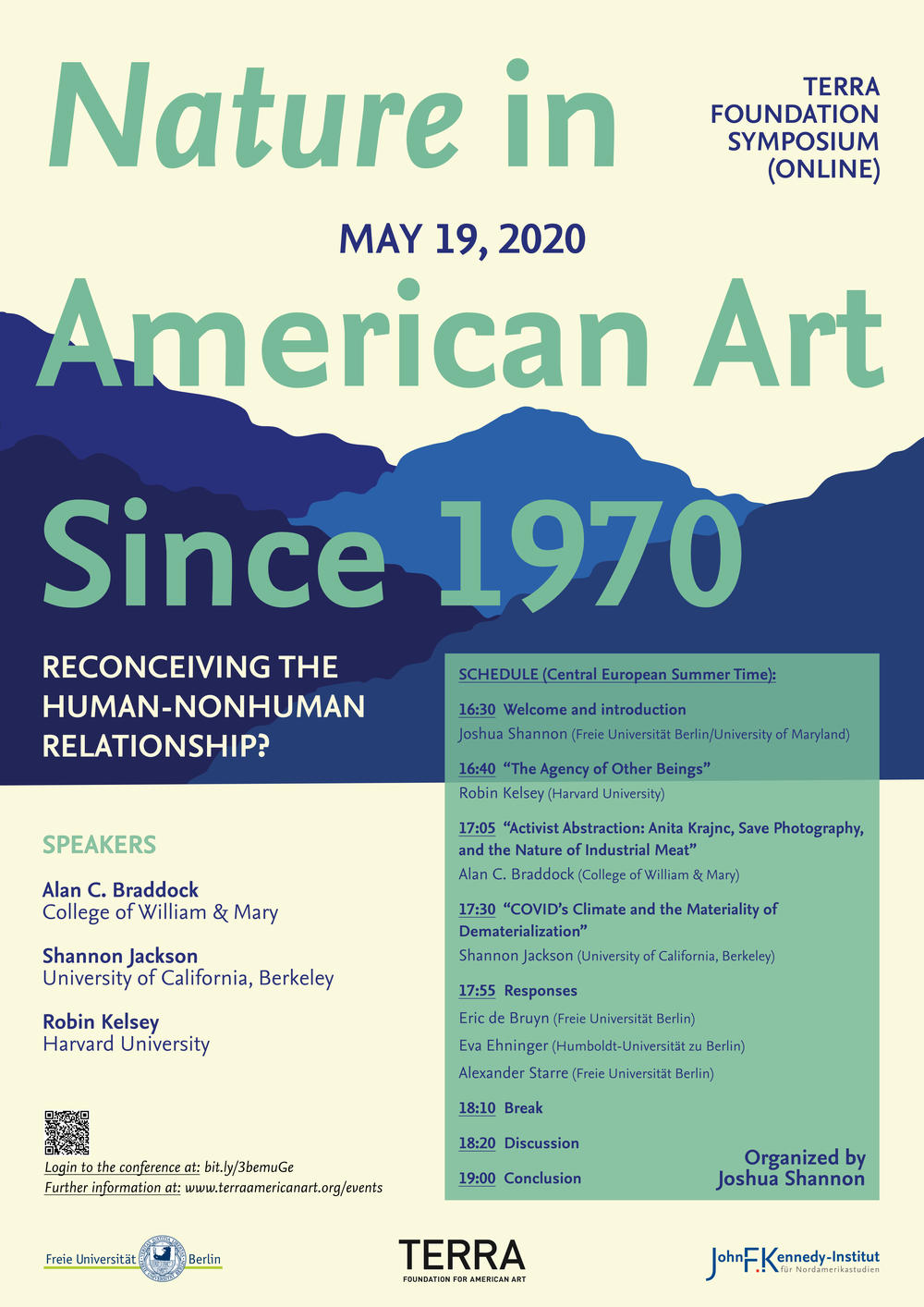“Nature” in American Art Since 1970: Reconceiving the Human-Nonhuman Relationship?
Terra Foundation Symposium (online) - May 19, 2020
The symposium was delivered online using Webex Events. Watch the recording of the event (without the Q&A section) here.Can the art produced in the United States over the last fifty years help us model a new human-nonhuman relationship for the era of climate change?
Fifty years ago, U.S. culture was transformed by a new kind of environmentalism, one concerned less with the local effects of toxins and pollution than with the potentially calamitous effects of human activity on a global scale. The publication of Rachel Carson’s Silent Spring and Paul Ehrlich’s Population Bomb, the circulation of photographs of “the whole earth,” the first celebration of Earth Day, and the establishment of the Environmental Protection Agency, among other events, not only made American thinking about “nature” more urgent but also transformed the concept of nature itself into something more relational and global. At the same moment, modern art was also undergoing an analogous kind of change, enacting its famed “dematerialization” and entering into “the expanded field” of installation art, earthworks, and other open forms. In the half-century since these developments, human activity has continued to degrade the nonhuman realm, causing deforestation, massive species extinction, ocean acidification, and sea level rise, while global temperatures are already more than one degree Celsius warmer than pre-industrial levels. Many artists have addressed these developments in their work, even seeking to throw into doubt the historic idea of “nature” itself. Meanwhile, scholars have engaged in ecocritical analysis, asking what values, in relationship to our environmental crisis, artworks have really supported.
Important fundamental questions, however, remain largely unanswered: Can the art produced in the United States over the last fifty years help us model a new human-nonhuman relationship for the era of climate change? Has recent American art, to be slightly more specific, imagined any viable alternative to the modern idea of nature as the passive “other” to human agency, an object or image to be exploited or protected by “man”? Finally, what role might art play in the cultural transformation that will be necessary for stopping climate change?
This symposium brings together a small group of leading scholars and invites them each, through close analysis of works of art, to propose answers to these questions.
Schedule (Central European Summer Time)
16:30 Welcome and Introduction
Joshua Shannon
Terra Visiting Professor of American Art, Freie Universität Berlin
Professor, Art History & Archaeology, University of Maryland
16:40 “The Agency of Other Beings”
Robin Kelsey
Dean of Arts and Humanities
Shirley Carter Burden Professor of Photography
Harvard University
17:05 “Activist Abstraction: Anita Krajnc, Save Photography, and the Nature of Industrial Meat”
Alan C. Braddock
Ralph H. Wark Associate Professor of Art History and American Studies
College of William & Mary
17:30 “COVID’s Climate and the Materiality of Dematerialization”
Shannon Jackson
Associate Vice Chancellor for the Arts and Design
Cyrus and Michelle Hadidi Chair in the Humanities
University of California, Berkeley
17:55 Responses
Eva Ehninger
Professor of Modern Art
Humboldt-Universität zu Berlin
Eric de Bruyn
Professor of Modern and Contemporary Art
Freie Universität Berlin
Alexander Starre
Assistant Professor, John F. Kennedy Institute for North American Studies
Freie Universiät Berlin
18:10 Break
18:20 Discussion
19:00 Conclusion

